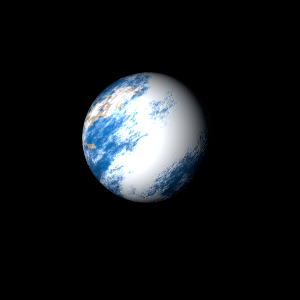|
|
Space Astro
|
Info for exoplanet "Furare Saida"
| Scientific (actual) data |
|---|
| Planet | HD 233832 b |
| Planet status | Confirmed |
| Mass sini | 2.72 |
| Orbital period | 4047 |
| Semi major axis | 4.438 |
| Orbit eccentricity | 0.381 |
| Discovered | 2018 |
| Updated | 2020-03-09 |
| Omega | 321.365 |
| Tperi | 2456880 |
| K | 47.18 |
| Publication | Published in a refereed paper |
| Detection type | Radial Velocity |
| Star name | HD 233832 |
| Right ascension | 171.52° |
| Declination | 50.38° |
| Mag v | 10 |
| Star distance | 58.8 |
| Star metallicity | -0.66 |
| Star mass | 0.71 |
| Star radius | 0.68 |
| Star sp type | K0V |
| Star age | 5.417 |
| Star temperature | 4981 |
| Wikipedia article | HD 233832 b |
Back
| |
| Fictional info (?) |
|---|
| Suggested name | Furare Saida |
| Planet type | Cold planet |
| It has the longest rotation period (445 days) of any planet in its solar system and rotates in the opposite direction to most other planets.
This planet is named after the deity Furare Saida, the god of the sea.
Its orbital eccentricity is the largest of all known planets in its solar system; at perihelion, Furare Saida's distance from HD 233832 is only about two-thirds (or 86 pct) of its distance at aphelion.
It may have had hydrogen deuteride (HD) oceans in the past, but these would have vaporized as the temperature rose due to a runaway greenhouse effect. |
| Atmosphere | Ozone | 54% |
| Ethane | 23% |
| Hydrogen deuteride (HD) | 22% |
| Atmospheric pressure | 0.7 bar |
 |
| No known satellites |
| Google search for Furare saida |
|
Website by Joachim Michaelis
|
|
|
|